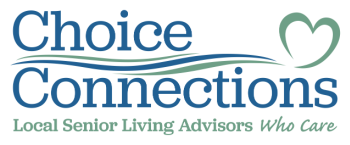Caring for the Caregiver
Each year in November, we honor and recognize family caregivers across the United States. An estimated $375 billion dollars in care is provided by family caregivers annually according to National Alliance for Caregiving and Evercare. Caring for a loved one is a personal choice. There are many reasons why a family would choose to provide care. According to AARP, there are an estimated 530,000 family/friend caregivers who provide 500 million hours of support every year, just in Minnesota. Caregiving can be rewarding to both the caregiver and the person on the receiving end. However, it is not without its challenges. So, what happens when the caregiver needs or wants a break? Thankfully there are options to provide this.
Below are several types of respite care available to help the caregiver care for themselves and their loved ones.
Adult Day Programs
Adult day programs are a great way to provide a weekday break to anyone caring for an older loved one. Some of the benefits of adult day:
- meaningful and engaging programs to stimulate the mind and body
- nutritious meals
- limited health care services like bathing, medication management and other personal care services.
- Social connection to other people
- Transportation
Most adult day programs require a contract. This helps the site plan their staffing needs. The average daily rate for this type of program is $103 according to the Genworth cost of care survey. A lenght of day may be 6-8 hours. Half a day of adult day is an option as well. Most adult day programs welcome all people. There are some programs specific to ethnic groups that focus on serving a specific population. For people who like to socialize and need structure this programming is ideal. Adult day care has licensing requirements through the state that they are required to abide by. This is a wonderful more affordable option for caregivers who may be working during the week. Or for the retired caregiver who needs a break to run errands or spend time with friends.
Home Care
A second option for a caregiving break is home care. In this case, the provider comes to the home of the person needing care. Again, it is something that is contracted. Most home care providers have a minimum number of hours per day that they will provide service. There is more flexibility in terms of hours when it comes to home care. For example, if someone needs help during the evening hours, home care can accommodate this. The average hourly rate for home care is $40.00 for a home health aide (Genworth). Some home care services provide medical care. Other will only provide companion care. Both can usually provide transportation for medical appointments, shopping, or other community outings. Home care is more personalized and 1-2-1. Like adult day services, home care is regulated and licensed through the state.
Short-term Respite
Stay-by-the-day or short-term respite care in a facility is needed when a caregiver requires a longer break. This may be needed to attend a family wedding, visit a new grand child or to have surgery. It is often planned. This option usually takes place in an assisted living facility. When a senior living community offers this type of care it is typically in a furnished studio apartment. The rate can vary depending on the length of stay. On average, it costs $180.00 a day to stay in assisted living (Genworth) in the Minneapolis area. When looking for a short-term stay, enlisting the help of a certified senior advisor can save you time in your search. Choice Connections can help with that. You can learn more at www.choiceconnectionsmn.com . .
Assisted Living
There may come a time when more than short-term care is needed. This can be due to cognitive or physical decline. In most cases, assisted living is the logical next step. In assisted living, a person can have access to health care help 24 hours a day and 7 days a week. Meals, recreational programs, transportation, and other amenities make it an attractive option for care. In most assisted living facilities, the terms of the agreement are month to month with a 30 day notice to move. It is another option to keep in mind when care is needed for more than a few days or weeks.
Avoiding Burnout
Caring for a family or friend is a labor of love. It can be difficult to step away from this important work. At the same time, it is necessary to care for oneself. Planning friend dates, taking a walk, seeing your physician, are all important. If you or a loved one needs help, ask for it. Often, extended family, church members, neighbors are ready and willing to step in. You are not alone.
Paying for Care
If you have a long term care contract, check to see if it will cover a ‘respite” stay each year or if it will cover adult day or home care. Keep in mind, many policies require you to meet an elimination or waiting period before they pay in full. Accessing some respite or adult day may help you meet that waiting period as well as give you a break. And if the one you are caring for is a disabled veteran check to see if the respite can be covered there.
Thank a Caregiver This Month
I’m sure you can think of someone you know that is caring for someone. Sending a card or making a call to offer some help would be a nice gesture. Choice Connections team wants to say “Thank you” to all the organizations, families, staff, and volunteers who dedicate their time to caring for others.

